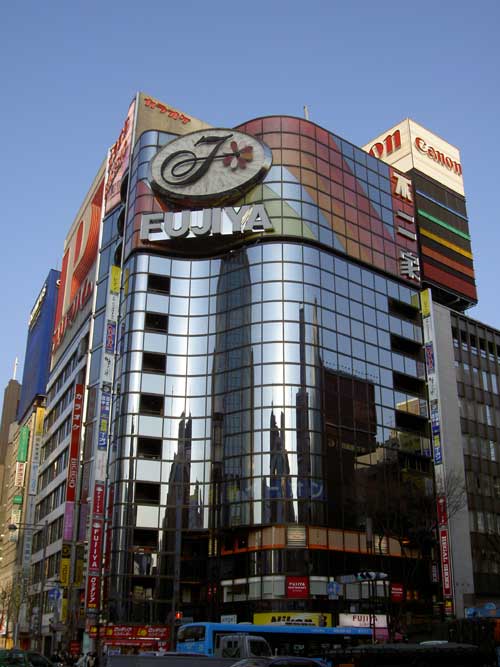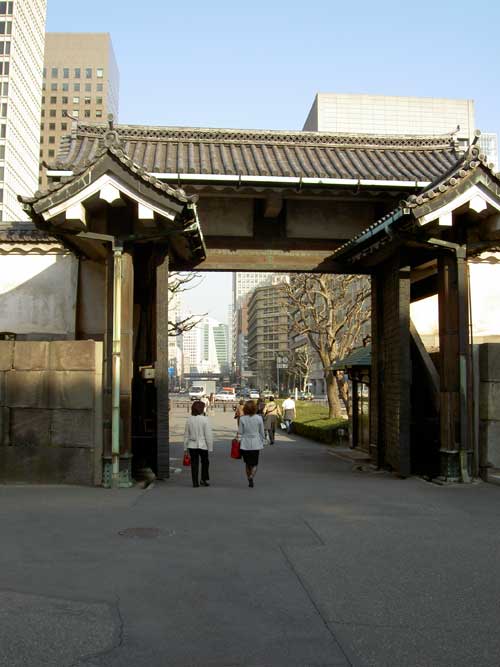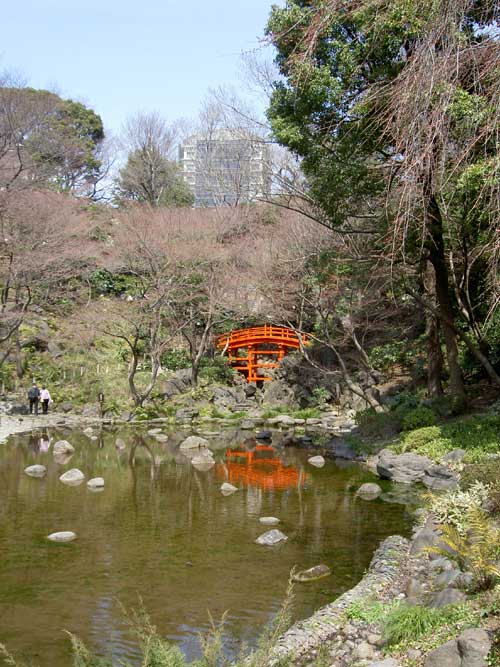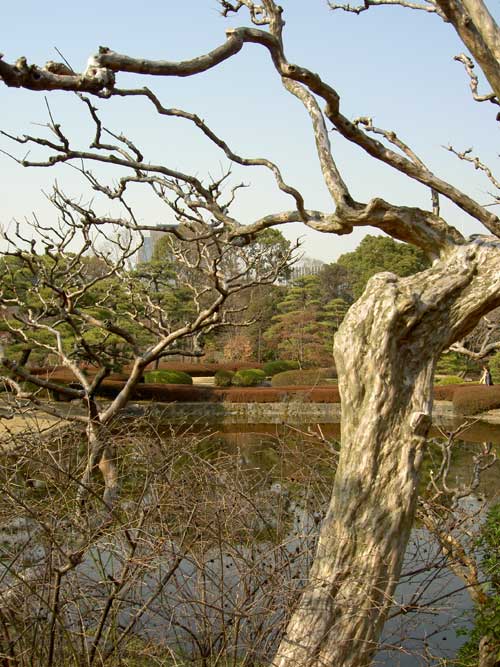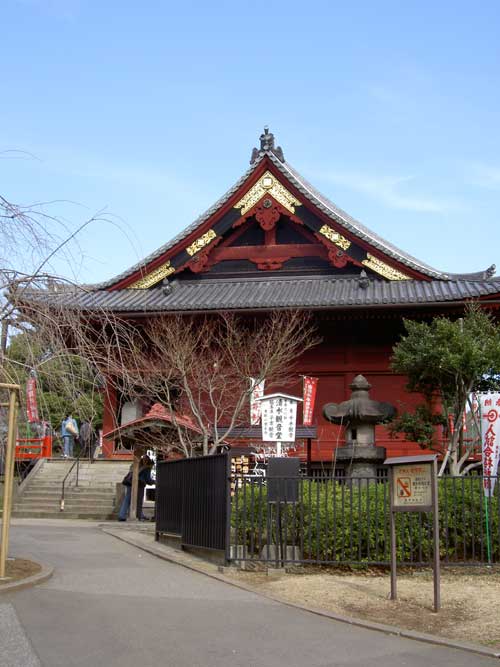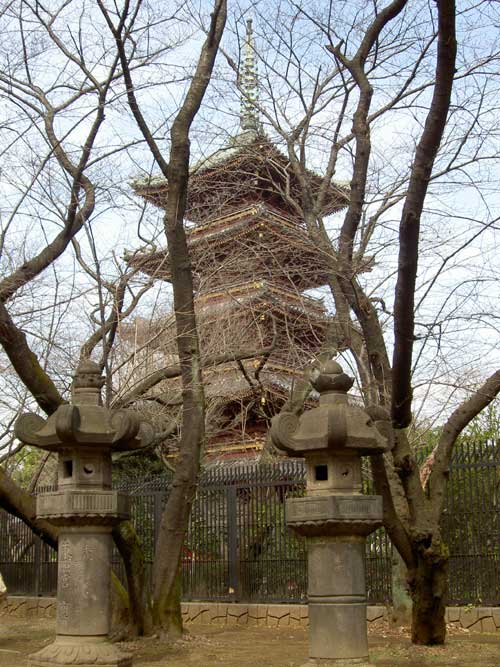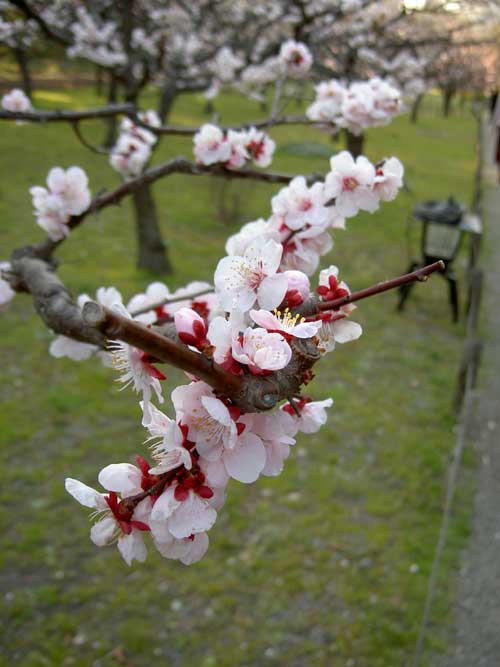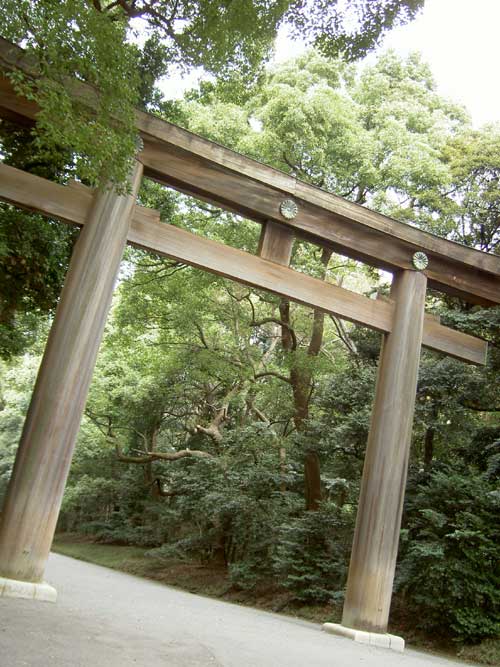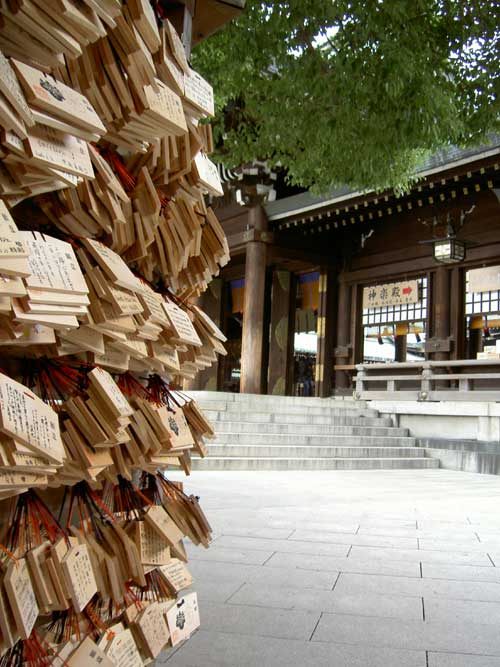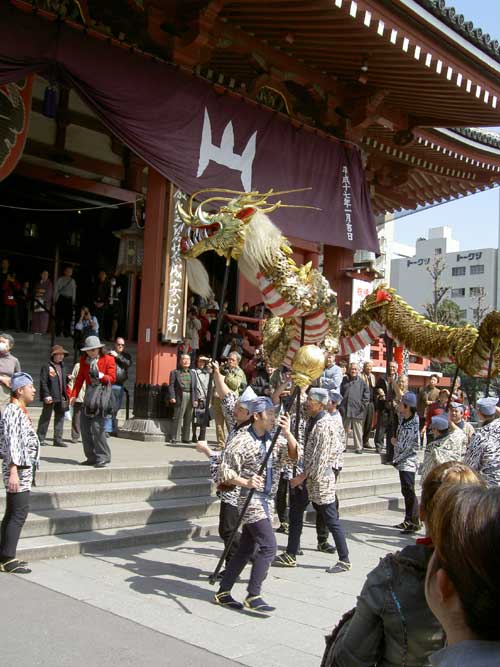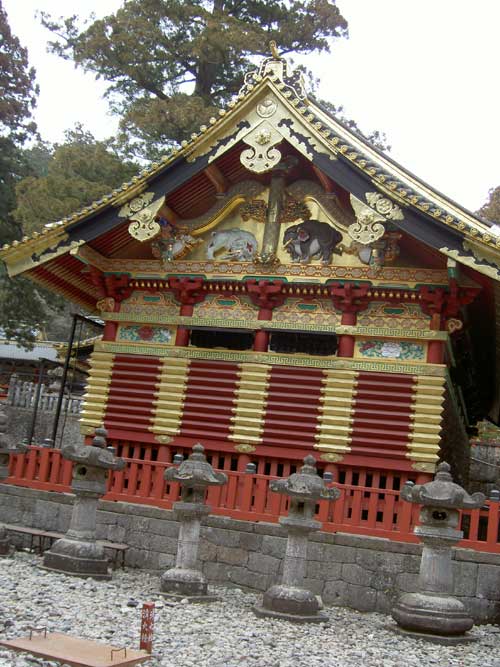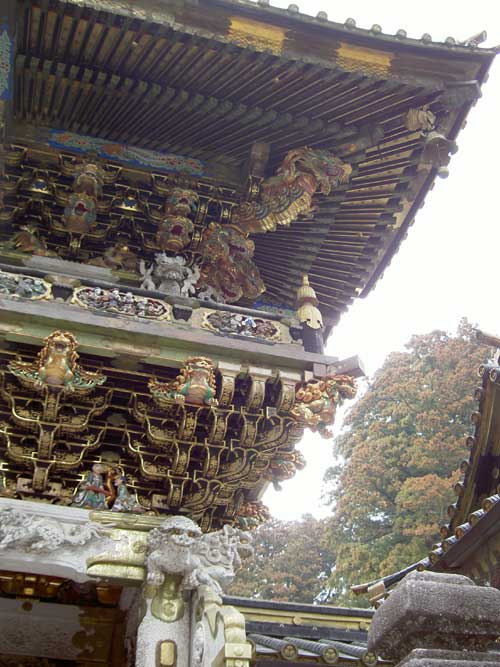




Kanto
Kanto is the plain where Tokyo, formerly Edo, has been built. Its main feature
is the agglomeration of Tokyo-to, or Tokyo Capital. The entire city is about
half the size of the Netherlands and holds about 12 million people. And believe
me, Tokyo is every part the place of hip an modern that everyone tells you it
is!
This is Sukiyabashi Crossing in Ginza. Ginza (lit. Silver Seat) is the
center of hip and cool, with huge department stores, the Sony Building, large
book and music stores and lots of cinemas. It is also very nearby the Tsukiji
Fish Market, Tokyo JR Central Station, Hibiya Park, the Imperial Gardens, the
Kabuki Theatre and the Otemachi bussiness centre. I love Ginza! It is
not just a central hub to all cool parts of central Tokyo, the place itself
has a charm that I love very much and think only second to the hustle and bustle
of Shinjuku's Kabuki-cho.
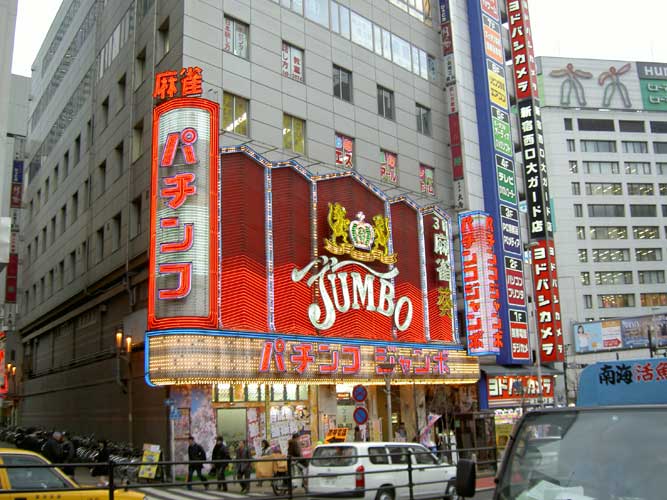
...of which this is a part. Believe me, once you've visited both Ginza and Shinjuku
(lit. New Inn) by night, there is no need to visit Las Vegas anymore, at least
not for the neon signs... Shinjuku is the shopping and entertainment place-to-be
with multitudes of department stores in the more uptown parts and masses of
game halls, pachinko parlours, restaurants in every (price) class and, in more
remote streets, any gal or guy(!) you could ever want for the right price.
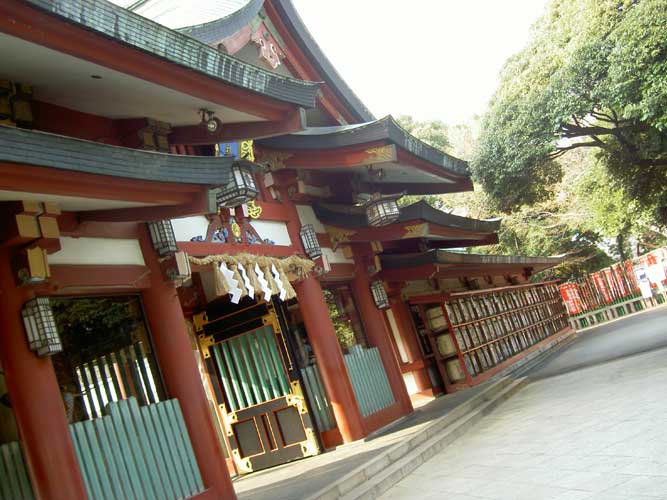
The fun thing with Tokyo is that you can turn a corner in a hyper-modern part
of town and immediately get a view like this: old and new go together seamlessly
in this country. This is the entrance of a temple I ran across when I was stupid
enough to walk from Hibiya to Shinjuku instead of taking the omnipresent subway.
This old-new contrast is emphasised in this picture of Otemon (lit. Large Hand
Gate), the eastern entrance to the public part of the Imperial Gardens. Since
these Gardens border on Otemachi (Large Hand Village), the bussiness district
of Tokyo, ancient architecture and skyscrapers go almost hand in hand in the
very centre of Tokyo.
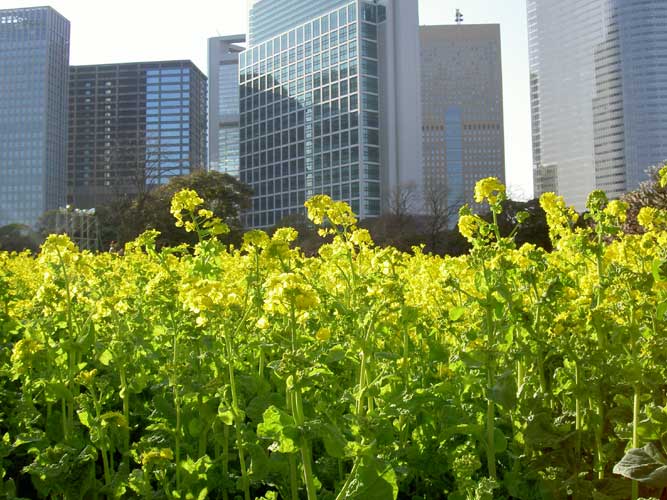
Since the Tokyo urban area is so incredibly large, it is very difficult or at
least very time-consuming to find some nature. If not for the parks. Tokyo has
seven large, very large parks and they are very beautiful. Quite logical,
it is the only place the average Tokyoite has to go to see some green stuff.
Although they are invariably large, Tokyo's parks tend to be crammed in between
the urban areas, which yields weird views like the one above, from a park between
Ginza and the harbour.
This is a park near Ikebukoro, right next to the Tokyo Dome, the stadium where
the J-league plays their baseball games. The screams coming from either the
Dome or the nearby entertainment park's rollercoasters get almost completely
dampened by the park's foliage. Almost.
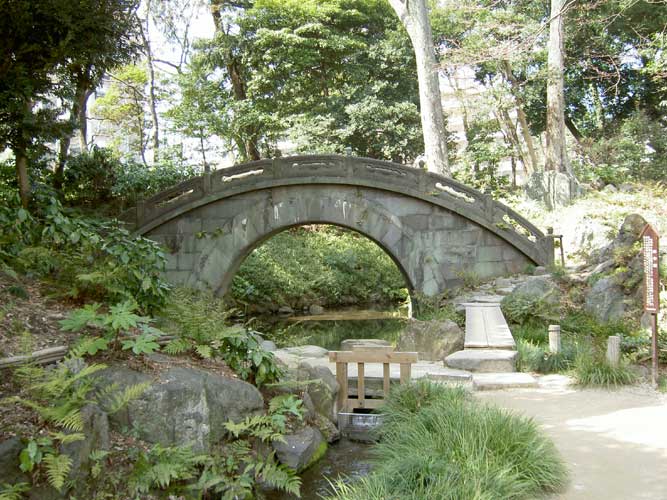
This is an ancient bridge in the same park. It is called the 'Moonlight Bridge'
because the reflection of its exact semicircle in the water below reminded its
builder of the moon. This bridge is quite unique in the fact that it is an authentic
specimen from the eighteenth century. This is contrary to most of Tokyo's 'ancient'
temples, of which the most were bombed down during the Second World War.
This is part of the Imperial Gardens near Ginza and Otemachi. These gardens
are very large and beautiful and also very clean. The fact that everything looked
like it was barbered with attention to even the smallest detail made me think
them a little too engineered. Guess all must be perfect for the Emperor, who
lives just half a kilometer away.
This is a temple on the south side of Ueno Park. Ueno (lit. Upper Fields) is
a part of Tokyo northeast of the city centre proper. Next to and below Ueno
Park is Ueno Railway Station, which is the third-largest of Tokyo after Shinjuku-eki
and Tokyo-eki. Ueno park is quite large, it even has a zoo inside its grounds
and is crammed with musea of art both ancient and futuristic. Ueno also has
the largest homless population of any of Tokyo's parks for it is the only one
without an entry fee.
It also has quite some places of reverence. A temple, a pagoda, the face of
what was once a Buddha statue, it can all be found in Ueno Park. And that's
when the crowds stay away...
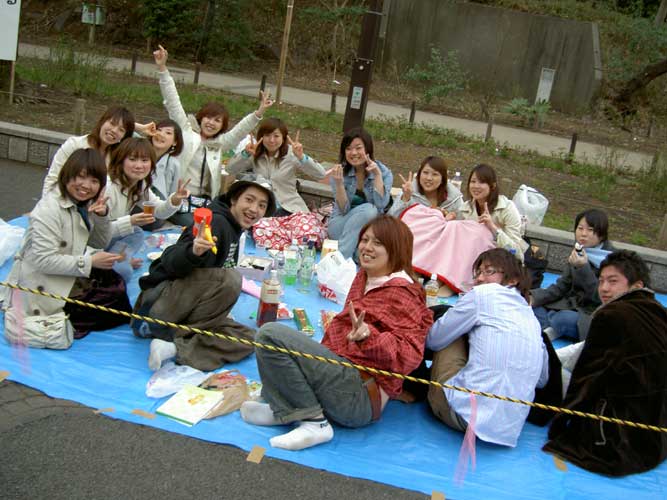
For at a certain time of year, Japanse both old and young (but especially young)
spend their afternoons, evenings and nights with friends and aqcuaintances in
the park below the trees. This so-called Hanami Festival goes with a lot of
laughing, eating and drinking. But what is it all about? Well...
This is what it is about! All Japanese are completely mad about
the Sakura, the blossom of the Japanese Cherry Tree! Most parks abound with
these trees, which gives them a breathtaking pink view in the right season of
spring. The Japanese love the sakura so very much that they celebrate Hanami
(lit. Flower Watch) to see the first buds pop open and keep on celebrating until
the flowers die. The pink blossoms are prominent in commercials both printed
and broadcast and during the spring there is even a separate part of the weather
forecast which reports on which places have opened blossoms. Weird but very
funny!
This is one of the most common sights in Japan: a torii. A torii is just a Shinto
gate, but there seem to be some superstitions attached to the things which I
don't all know nor understand. On lots of torii, I saw small rocks put on top
of either the upper or the lower beam, and I guess that it's supposed to bring
luck to the one who laid the stone there for as long as it stays there. This
one torii is the second-largest I saw and guards the entrance of the temple
dedicated to Emperor Meiji and his wife in Omotesando.
Before one is allowed to enter a temple or shrine, purification is necessary.
In front of each temple is a small fountain with bamboo ladles. The pious visitor
scoops up some water with the ladle, rinses his left hand, then his right hand,
then pours some water in a hand, puts it in his mouth and spits it out again
in the trough below the fount. After that, cleansing is complete and one is
elegible to enter the Holy Place. This fountain is in front of the Meiji Shrine
in Omotesando.
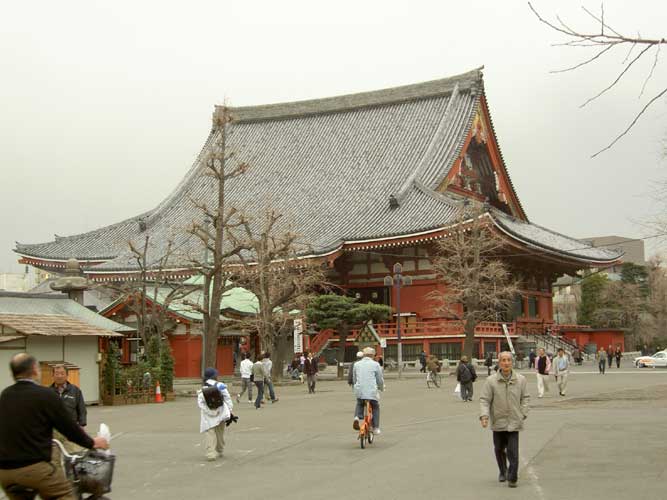
This is the huge temple in Asakusa, near Ueno. Asakusa is quite a touristic
temple but also one of the biggest and most beautiful that I have seen. The
only one that was bigger was the one in Nara, near Kyoto, which is the largest
wooden structure on the entire globe. In Asakusa, just ignore all the tourists
and the souvenir shops!
At most temples, you can buy objects of reverence and things the like. The Japanese
are as clever as the Catholics in that they quickly realised that religion sells!
These wooden cards for example are for sale for some ¥ 400, which amounts
to about € 3. You can write a wish on the card and hang it on a rack in
front of a shrine, thus entrusting the wish to the spirit of the shrine. Emperor
Meiji here has a lot of work to do!
When I visited the temple at Asakusa for the first time, there was this Dragon
Dance with a golden dragon, accompanied by live traditional music. Since Asakusa
was such a touristic place and I was there on a saturday, I thought that this
dance thing was just to lure tourists and would be performed at least every
week. Later I found out though that this was an annual event and I had just
run into it by chance!
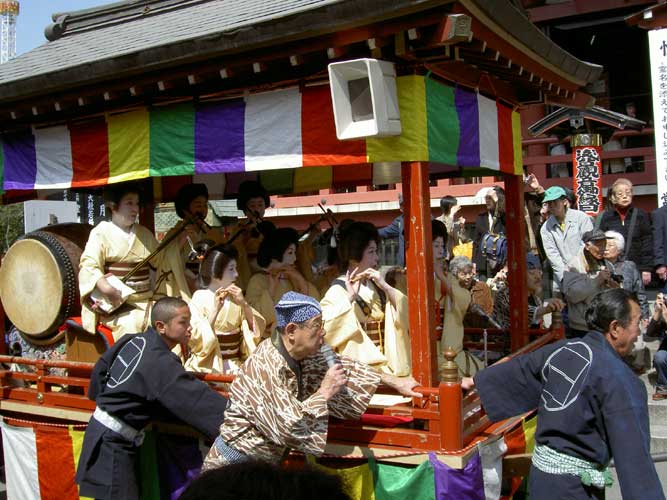
Talk a bout luck... Although these ladies most probably aren't geishas (I had
to wait till Kyoto for that!) they are beautifully made up and dressed in the
traditional way. As you can see, they were seated in some kind of cart that
was hauled after the men performing the dragon dance.
Kanto isn't just Tokyo. In the very north of the plain, against the mountains
and two hours of train travel away from the Eastern Capital is Nikko, a huge
complex of amazing temples and shrines. Nikko is one of the largest and most
beautiful temple complexes in all of Japan. Unfortunately, this has converted
the place into a touristic hell. It's full of both pilgrims and gaijin
(foreigners), the entry fees are sky-high and the personnel is anything but
rude.
Fortunately, the utter opulence and beauty of the temples kind of compensated
all these downsides for me. And when I ran into an quintet of American Navy
employees who took me with them to a bar and a great Brazilian restaurant in
Omotesando, my day was made!
Last
updated on July 10th, 2005. Please read legal note here.
This site is best viewed at a resolution of 1024 x 768 or higher and at full
screen.

